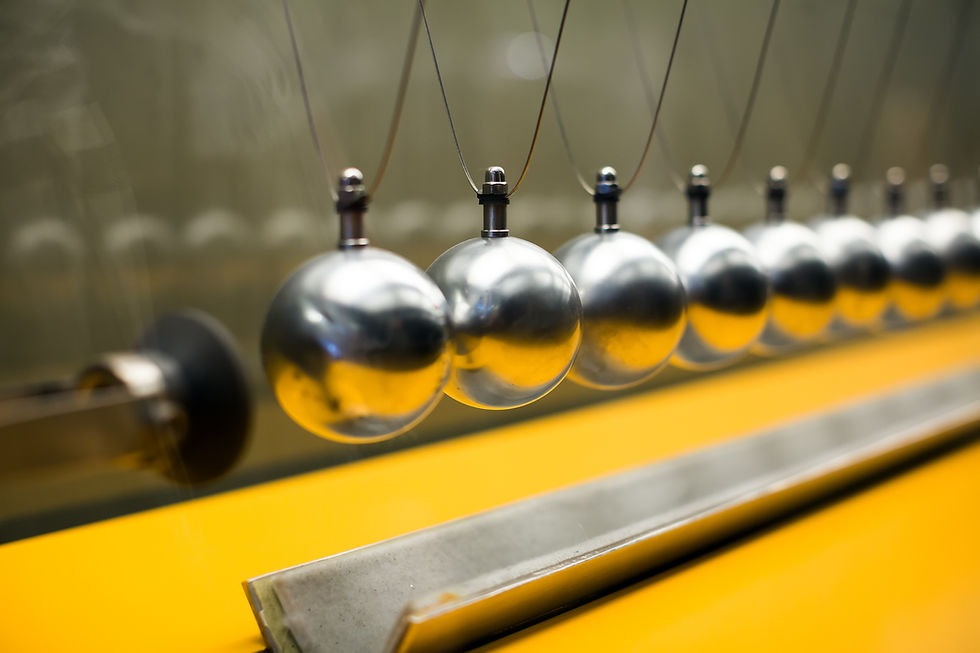DNA Encoding: A Scientific Revolution
- Medicine Inside
- Mar 4, 2021
- 3 min read
Updated: Mar 31, 2021

Scientists funded by the National Institutes of Health (NIH) have recently found a way to encode a replayable movie into molecules of DNA. The short movie features a man riding a horse, taking the scientific community by storm (NIH 2017). By using the high-tech genetic editing technology, CRISPR, scientists were able to first store an image of the human hand into bacteria. CRISPR is a group of proteins that are capable of acting as an immune system in some species of bacteria (Daley 2017).
According to the National Health Institutes, “The sequential nature of CRISPR makes it ideal for recording events over time.” The concept behind DNA encoding is rather simple, where normal computers use the binary system of 0s and 1s to store data, DNA uses the nucleotides of Adenine, Guanine, Cytosine, and Thymine otherwise referred to as A, G, C, and T respectively. How scientists were able to input the code frames into bacteria was very clever. First, they took a video and encoded it into a four-base DNA code with the nucleotide letters representing the position of the frame's pixels. The video had five frames and so the letters were rearranged for each frame.
Then, the researchers fed the DNA to some E. Coli bacteria which acted as if the strands were invading viruses and absorbed them into their own genetic code in order to remember the attacker. By assimilating the strands into their own DNA, the bacteria then become carriers of the genetic information with little to no effort. Since bacteria use asexual reproduction, this message stays the same when a singular bacterium splits into two genetically identical daughter cells. Although genetic mutations are possible and can arise randomly and corrupt the video, this type of DNA encoding was able to keep the video message with 90 percent accuracy when looked at again from new bacterium individuals.
As the Smithsonian Magazine reports, “scientists first encoded a 52,000-word book into DNA and has only improved since then.” One great benefit to this technology is its small size which allows for massive data storage and lowers corruption risk however the main benefit which has most neuroscientists thrilled is the possibility to turn cells into recorders. According to neuroscientist Seth Shipman, “We want to turn cells into historians.” Using the DNA encoding technology, cells would be able to track molecular events over time which would, in turn, become a very efficient diagnostic system and doctors could study changes in gene expression, known as mutations, over time and be able to pinpoint the cause of a certain ailment (NIH 2017). This early diagnostic system can lead to the detection of diseases months or even years before they become terminal, saving countless lives in the process. In addition to early detection, doctors would also be able to compare the genetic history of one individual to that of another.
This kind of comparison would in turn aid the medical industry by showing the similarities in the genetic histories of numerous patients and finding the root cause of the disease. In conclusion, the CRISPR process of encoding DNA, although just recently starting out, could one day revolutionize the way we as the human race go about conducting research, storing data, and treating patients.
Sources
Daley, Jason. “Scientists Store Video Clip in DNA of Living Cells.” Smithsonian.com, Smithsonian Institution, 14 July 2017, www.smithsonianmag.com/smart-news/movie-encoded-living-dna-first-time-180964058/#:~:text=Now%20for%20the%20first%20time,week%20in%20the%20journal%20Nature
NIH. “Scientists Replay Movie Encoded in DNA.” National Institutes of Health, U.S. Department of Health and Human Services, 12 July 2017, www.nih.gov/news-events/news-releases/scientists-replay-movie-encoded-dna



Comments